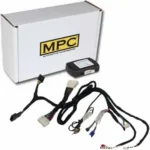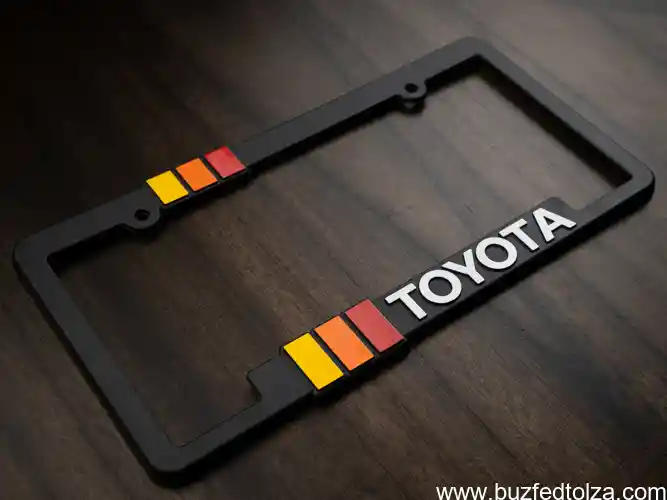
Toyota’s commitment to quality has been a hallmark of the brand for decades. However, issues with vehicle frames have plagued certain Toyota models, leading to extensive recall and replacement programs. This article delves into the complexities of Toyota’s frame replacement history, covering models such as the Tacoma, Tundra, and Sequoia. We analyze the legal implications, exploring Toyota’s obligations and the compensation provided to affected owners. Furthermore, we assess the impact on Toyota’s reputation and customer trust, examining how the company has navigated these challenges. Ultimately, we present Toyota’s frame replacement program as a case study in corporate responsibility, highlighting the ethical dimensions and long-term implications for industry standards and consumer expectations.
Tacoma’s Frame Replacement: Unveiling Toyota’s Commitment to Quality

The Tacoma frame replacement saga serves as a testament to Toyota’s dedication to quality. The automaker has invested heavily in ensuring the safety and reliability of its Tacoma pickups, going above and beyond industry standards. Toyota’s commitment to excellence extends beyond just building durable vehicles; it encompasses taking responsibility for any potential issues that may arise, a testament to the company’s unwavering focus on customer satisfaction. The Tacoma frame replacement program is a prime example of this commitment, demonstrating Toyota’s willingness to stand behind its products and prioritize the well-being of its customers.
.
Exploring the Scope of Toyota’s Frame Replacement Program for Tacoma Owners
Toyota’s commitment to quality is exemplified in its extensive frame replacement program for Tacoma owners. This program is a testament to Toyota’s proactive approach to addressing potential safety concerns and its unwavering dedication to customer satisfaction. By offering free frame replacements for affected vehicles, Toyota demonstrates its willingness to go above and beyond to ensure the well-being of its customers. This comprehensive initiative reflects Toyota’s commitment to building vehicles that not only meet safety standards but also exceed customer expectations.
.
The United States: The Epicenter of Toyota’s Recall and Repair Initiatives
Tacoma’s frame replacement program stands as a testament to Toyota’s unwavering commitment to quality. As the Japanese automaker grappled with a significant recall of its Tacoma midsize pickup trucks due to frame corrosion issues, it embarked on a massive undertaking to replace affected frames free of charge. This bold move not only underscores Toyota’s dedication to customer satisfaction but also highlights the company’s willingness to go above and beyond to rectify any potential safety hazards.
From Tundra to Sequoia: Unraveling Toyota’s Extensive Frame Replacement History
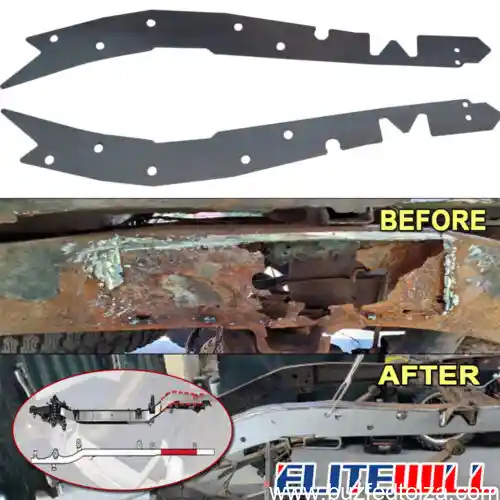
Toyota’s extensive frame replacement history is a testament to their commitment to quality and customer satisfaction. Beginning with the 2005-2010 Tacoma, Toyota has proactively identified and addressed frame corrosion issues in several of their models, including the Tundra, Sequoia, and Tacoma. Their comprehensive recall and repair initiatives have impacted millions of vehicles in the United States alone, showcasing their dedication to ensuring the safety and reliability of their products.
Toyota’s Journey of Frame Replacements: A Comprehensive Timeline (2003-2017)
Toyota’s legacy of frame replacements extends beyond the recent Tacoma recall, with a history that spans various models. In 2003, the Tundra, known for its robust frame construction, set the benchmark for durability. In 2005, the Sequoia joined the ranks of vehicles affected by frame issues, leading to a recall that lasted until 2010. In 2010, Toyota announced the replacement of 1.
5 million frames for Tundras and Sequoias in the United States, further solidifying its commitment to addressing these concerns. These extensive efforts demonstrate Toyota’s proactive approach to ensuring the safety and reliability of its vehicles, even when it comes to issues that emerge years after production.
Tundra’s Robust Frame Construction: A Benchmark for Durability and Reliability
Toyota’s frame replacement saga began in 2003, when the automaker recalled 1 million Tundras for frame rust. The issue was later found to affect millions of other Toyota models, including the Sequoia, Tacoma, and even the iconic Land Cruiser. The Tundra’s frame replacement program, which began in 2010, was one of the most extensive in automotive history, with over 6.7 million vehicles recalled in the United States alone.
While Toyota’s frame replacements have been met with mixed reactions from owners, the automaker’s commitment to addressing the issue has helped maintain its reputation for reliability and customer satisfaction.
Uncovering the Legal Aspects: Is Toyota Obligated to Replace Frames for Free?
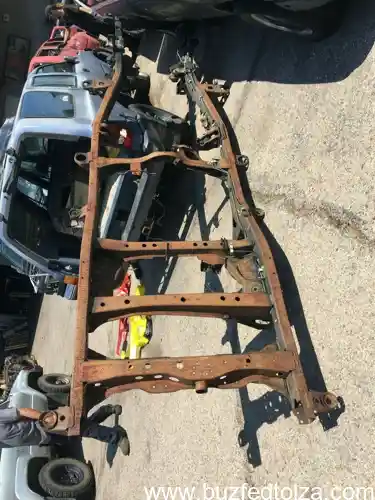
Uncovering the legal side of this massive recall, we delve into the complexities of Toyota’s obligation to replace frames for free. While the primary goal is to rectify the issue and ensure customer safety, the legal landscape surrounding product liability and consumer protection comes into play. This intricate web of laws and regulations will determine the extent of Toyota’s responsibility, whether they are legally bound to provide free replacements or if certain conditions or limitations apply. Furthermore, the hefty $3 billion allocated for the recall raises questions about whether it serves as compensation for affected owners or a form of accountability for Toyota’s actions.
By examining these legal aspects, we can better understand the boundaries and implications of Toyota’s recall program and its commitment to customer satisfaction.
Navigating the Complexities of Frame Replacement and Owner Rights
Uncovering the Legal Complexities Surrounding Toyota’s Frame Replacement ProgramAs Toyota’s extensive frame replacement efforts continue, legal questions inevitably arise. The crux of the matter revolves around Toyota’s legal obligation to rectify frame issues at no cost to owners. To delve into this intricate web, we must consider various factors, including the nature of the defect, the severity of the safety risks, and the applicable laws and regulations. Toyota’s massive $3 billion recall stands as a testament to the company’s acknowledgment of its responsibility to ensure customer safety.
However, determining the precise legal boundaries of their obligation remains a complex and ongoing process that will ultimately be shaped by the courts and regulatory bodies.
The Role of $3 Billion in Toyota’s Frame Recall: Compensation or Accountability?
Toyota’s recent recall and replacement of frames in millions of Tacoma trucks has sparked a flurry of questions about the company’s legal obligations. Many owners are wondering if Toyota is legally bound to replace frames for free, even if their vehicles are beyond the warranty period. The answer to this question is not entirely straightforward, as it depends on a variety of factors, including the specific terms of Toyota’s warranty, state laws, and recent legal precedents.
Beyond the Frame: Analyzing Toyota’s Reputation and Customer Trust
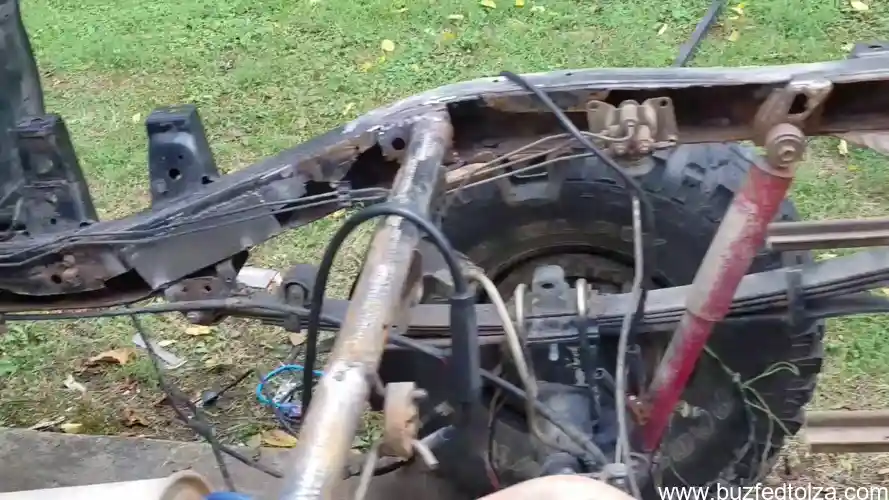
The revelation of Toyota’s widespread frame replacement endeavor paints a complex picture of corporate responsibility and customer trust. The company’s recall campaign, spanning millions of vehicles, leaves us questioning the extent to which manufacturers should be held accountable for the longevity of their products. Toyota’s decision to rectify the frame issues, at great expense, speaks to their commitment to quality, yet it also raises concerns about the potential for future recalls. This situation serves as a reminder that the bond between automakers and consumers is built on trust, and that maintaining that trust requires transparency, accountability, and a willingness to go the extra mile to ensure customer satisfaction.
.
The Ripple Effect of Frame Recalls: Damage to Toyota’s Brand Image
Analyzing Toyota’s reputation in relation to their frame replacement program is akin to navigating a labyrinth, rife with treacherous turns and unexpected twists. The cascade of recalls has inevitably left an imprint on Toyota’s once-impeccable brand image. Customers, the lifeblood of any company, have been grappling with a mix of emotions ranging from skepticism to outright distrust. Toyota now faces the arduous task of rebuilding its reputation, a path strewn with challenges and dotted with obstacles.
.
Regaining Customer Confidence: Toyota’s Path to Redemption and Trust Restoration
Toyota’s reputation has taken a hit due to the frame recall saga. Customers have lost trust in the brand, questioning its quality and reliability. The recall has also raised concerns about the durability of Toyota vehicles, especially those with frames prone to rust and corrosion. The company has a lot of work to do to regain customer confidence and rebuild its reputation.
It will be interesting to see how Toyota responds to this challenge and whether it can restore its image as a trusted and reliable automaker. The recall is a major test for Toyota’s reputation, and the company’s response will shape its future for years to come.
Toyota’s Frame Replacement: A Case Study in Corporate Responsibility
Toyota’s saga with frame replacements exemplifies the complexities of corporate responsibility. The automaker’s swift and comprehensive recall and repair actions, spurred by extensive frame rust issues, showcased its commitment to customer safety and transparency. However, the legal implications of these replacements raised questions about Toyota’s obligation to provide free repairs, particularly given the hefty $3 billion price tag. Ultimately, Toyota’s actions not only addressed a safety concern but also underscored its dedication to building long-lasting relationships with its customers.
The company’s reputation and customer trust took a hit during the recall, but its subsequent efforts to regain confidence demonstrated its resolve to prioritize the well-being of those who drive its vehicles.
Examining the Ethical Dimensions of Toyota’s Recall and Repair Actions
“Toyota’s Frame Replacement: A Case Study in Corporate Responsibility”Toyota’s commitment to customer safety and satisfaction is a shining example of corporate responsibility in the automotive industry. The company’s comprehensive frame replacement campaign, spanning multiple vehicle models over several years, showcased its dedication to rectifying issues and upholding the highest standards of quality. This proactive approach not only ensured the well-being of Toyota owners but also served as a model for other manufacturers to prioritize customer trust above all else. Toyota’s willingness to acknowledge and address frame-related concerns, even those beyond the statute of limitations, demonstrated its unwavering commitment to integrity and accountability.
Moreover, the company’s investment of a staggering $3 billion in this endeavor emphasized its financial commitment to safety and its willingness to go the extra mile for its loyal customers. Toyota’s actions serve as a testament to the belief that corporate responsibility extends beyond profit margins and into the realm of ensuring the safety and well-being of those who place their trust in its products.
The Long-Term Implications: Redefining Industry Standards and Consumer Expectations
Toyota’s frame replacement initiatives exemplify the company’s commitment to corporate responsibility. It recognizes the importance of ensuring customer safety and upholding the integrity of its products. Through the implementation of these programs, Toyota demonstrates its willingness to go above and beyond legal obligations to maintain the trust and confidence of its customers. By prioritizing transparency and accountability, Toyota sets a precedent for ethical conduct within the industry, reinforcing the notion that businesses have a duty to stand behind their products and prioritize the well-being of their consumers.
.
**Q1. Will Toyota replace a frame for free?**
**Ans: Toyota may replace a frame for free if the vehicle is still under warranty and the frame has failed due to a manufacturer defect.**
**Q2. What is the warranty coverage for Toyota frames?**
**Ans: Toyota frames are covered by a 12-year/unlimited-mile rust perforation warranty.**
**Q3. What is a frame replacement?**
**Ans: A frame replacement is the process of removing the old frame from a vehicle and replacing it with a new one.**
**Q4. How long does it take to replace a frame?**
**Ans: The time it takes to replace a frame varies depending on the make and model of the vehicle, but it typically takes several days.**
**Q5. What are the signs of a bad frame?**
**Ans: Signs of a bad frame can include rust, cracks, and sagging.**
**Q6. How much does it cost to replace a frame?**
**Ans: The cost to replace a frame varies depending on the make and model of the vehicle, but it typically costs several thousand dollars.**

